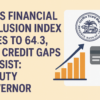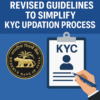
EXPOSITION
Banking services have evolved from local-for-local to global-for-local, leading to significant changes in payment systems across the globe. The paradigm shift from traditional banking to customer-centric banking is evident with banks propelling towards innovation in retail and wholesale banking solutions. As the banking landscape continues to evolve, it must go beyond agility, resilience and efficiency to tackle challenges such as customer experience, regulatory demands, growing transaction volumes and financial inclusion needs. Further, macro-economic changes impact both retail customers as well as corporations, including Small and Medium Businesses (SMB).
The major driver to address the agility of the ever-changing payment market is robust banking systems with seamless functions that can change, enhance and expedite operations while surpassing customer expectations and scaling up, as needed. Financial institutions are in the process of strengthening their core systems and financial mechanisms to accelerate the nation’s economic progress. Collaboration between the Regulator, Financial Institutions and payment system providers, to address the growing needs of the market, are propelling digital transformation across the payments landscape.
PREMISE
The Business, Operations, Technology and Risk teams of banking institutions are in consensus towards the adoption of a robust, seamless and future-ready payment system. Their concerns and thereafter ideation can be realised by implementing an integrated payment solution, grounded in the hollow-the-core approach. Encompassing various key features of consolidation, process automation, Straight-Through-Processing, MIS, unified architecture and overlay services, this solution creates a unified banking platform and ensures a seamless and secure transacting experience for financial businesses. Such a payment application also covers liquidity management objectives of businesses, from banks and financial institutions to corporate customers and finance divisions. By eliminating the silo-based approach and modularizing and decoupling architectural components, banks can extend the service life of their core systems. This approach, commonly known as hollow-the-core, facilitates system modernization without disrupting the existing architecture. It enables banks to consolidate redundant existing systems.
The hub and spoke model when applied to banking payment systems, translates into a payment hub that helps banks implement hollow-the-core practices, with the essence of People, Process and Products. Optimization of resources and real-time decision support systems empower banks to make informed decisions. By automating processes and minimizing manual intervention, an integrated payment solution streamlines payment processing operations and reduces delays, thus enhancing customer delight. Customized dashboards and reports provide comprehensive visibility across banking operations, enabling better control and decision-making. With the dynamic payments landscape and evolving mandates by regulatory institutions, a payment hub handles the complexity of implementing regulatory changes across multiple applications. With digital transactions on the rise, banks need scalable and reliable solutions. A payment hub that is horizontally and vertically scalable, complements and enhances the performance of the CBS.
CULMINATION
Institutions in the BFSI sector such as, central and commercial banks, co-operative banks and NBFCs, have been at the frontline to implement and adopt digitalization of financial services. Banks’ product teams consistently innovate to enhance the retail banking experience and simultaneously delve into facilities for Corporates like virtual account management and payment prioritization. The Business, Operations and IT teams are collaborating with payment system providers for upgrading their existing business functions and systems. With various key features of scalability, security and latest technology, these solution providers empower financial institutions to provide an end-to-end payments solution to consumers.
The banking sector stands on the brink of a digital transformation, driven by the need to overcome complex challenges and meet evolving customer demands. Implementing a payment hub with hollow-the-core practices drives digitalization, automation, innovation, and scalability in banking. Modernization in banking systems help ease existing challenges, support bankers scout for opportunities and realise them for overall socio-economic benefits. This transformation not only enhances operational efficiency and customer experience but also positions banks to thrive in the digital age, ensuring they are well-equipped to accelerate economic progress and meet the growing demands of the market.
As banks continue this journey, they will find themselves better prepared to navigate the complexities of the modern financial landscape, ultimately leading to a more robust and dynamic banking environment.
– Nitin Nagarkatte, COO, Montran India







